9+ Sample Refund Receipts
-
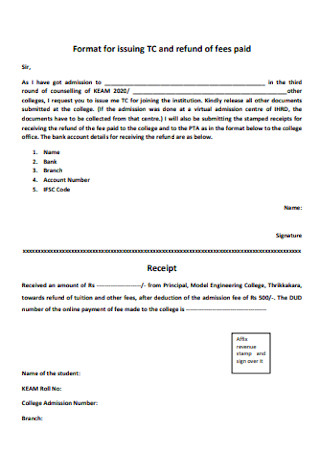
Refund Fee Receipt
download now -
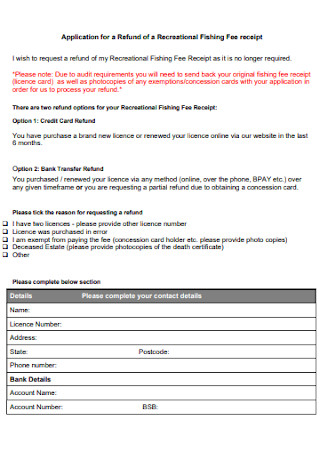
Refund of a Recreational Fishing Fee Receipt
download now -
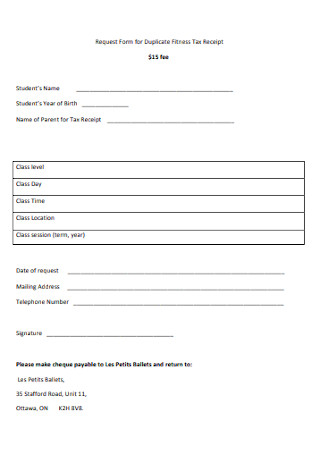
Fitness Tax Refund Receipt
download now -
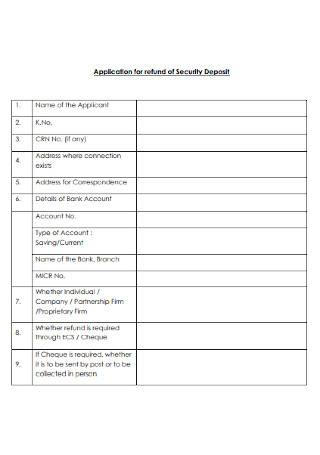
Refund Security Receipt
download now -
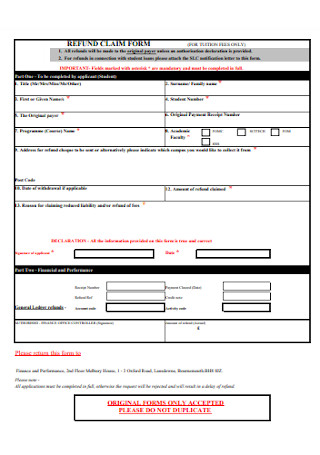
Refund Claim Receipt
download now -
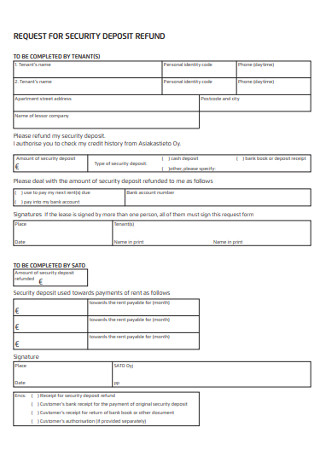
Security Deposit Refund Receipt
download now -
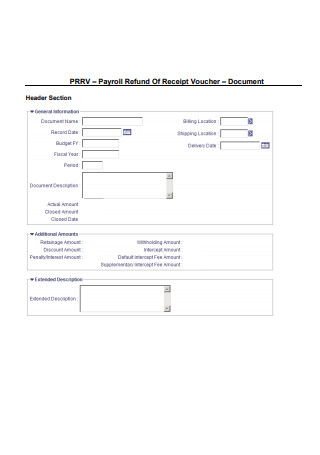
Payroll Refund Receipt
download now -
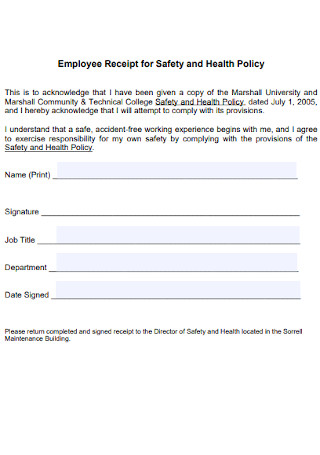
Employee Refund Receipt of Safety
download now -
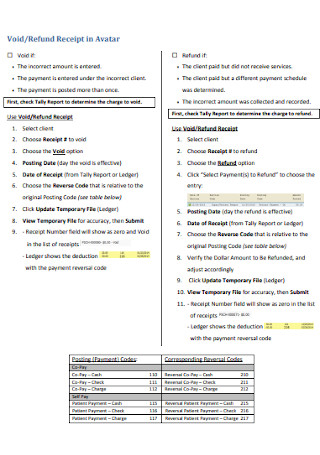
Refund Receipt in Avatar
download now
FREE Refund Receipt s to Download
9+ Sample Refund Receipts
What Is a Refund Receipt?
What Is the Importance of Refund Receipt?
When Is a Refund Necessary?
What Is a Refund Policy?
Who Needs a Refund Policy?
Elements of a Refund Policy
How to Create a Refund Receipt
FAQs
What Does Return Receipt Mean on an E-mail?
What Do You Do With a Refund Receipt?
Can a Business Have a No Refund Policy?
Refunds are extremely important in the business industry and in the business world as a whole. The procedure entails handling money and determining whether or not a return is doable. In this article, we’ve compiled a collection of refund sample receipts and refund receipt templates that you may use for free. They are quite valuable if you want to learn more about refunds and refund receipts, which we shall cover in further detail below.
What Is a Refund Receipt?
A refund receipt is a legal document that specifies the amount of money that has been reimbursed to a consumer due to the return of improperly manufactured or defective goods that they have purchased. Customers will receive a refund receipt that includes information such as the amount being reimbursed to them, who approved the refund, and the reason for the refund being issued to them (if applicable).
Each and every refund transaction requires the usage of a refund receipt, as it will serve as documentation that a refund has already been granted and that the buyer or beneficiary has indeed received the funds indicated. A refund receipt, like any other receipt types and papers, can be used as proof or evidence that can be submitted in court if the situation calls for it.
What Is the Importance of Refund Receipt?
Refunds are a major issue, and they will continue to be a major issue for both manufacturers and consumers. Refund receipt templates are critical to the refund process because they ensure that the refund policy is used as the foundation for all refund transactions that take place between a manufacturer and a consumer. The following is a list of the reasons why a return receipt is important. Having a refund receipt is significant because it provides evidence that the refund transaction that occurred between the business or manufacturer and the consumer actually occurred. A return receipt will thus complete the record that the business already has, while also providing the consumer with their own evidence of purchase. You might also be interested in down payment receipt samples.
The receipt for a refund is vital since it helps to prevent the occurrence of fraudulent refund requests from occurring. It is not possible for customers who have received a refund receipt from the business to request a refund for the same claim again. This is because the refund receipt recorded by the business serves as proof that they have already been reimbursed for the specific amount for the refund they have requested. You might also be interested in medical receipt samples.
When Is a Refund Necessary?
Anyone can submit or file a refund request, however, not all of those refund claims will be accepted or processed. There are some circumstances in which seeking a refund is necessary, and we have compiled a list of these situations below.
- If the materials or products purchased by a customer or consumer are defective or malfunctioning, the customer or consumer may be entitled to a refund. You may also be interested in cash receipt examples.
- If the advertisement for the product being sold does not accurately represent the true nature of the product, a refund will be required.
- If you are still within the time frame set by the manufacturer for returning items or products for a refund, you will need to get a refund from the company. The length of time or the period of time specified varies from manufacturer to manufacturer. They are always clearly mentioned on payment receipts and put in prominent locations where their clients can easily see and understand them.
- If a purchased product is damaged or malfunctions after it has been used for the first time, a refund will be issued as soon as possible. This is only relevant if the damage and the underlying cause of the failure are not the results of the customer’s actions or inaction. You may also be interested in order receipt samples.
- If the itemized receipt that was purchased was destroyed during delivery or while it was being delivered by the manufacturer to the client, a refund will be issued to the buyer. The customer has the option of returning the item and receiving a refund, or they can choose to receive a replacement, whichever they would prefer.
What Is a Refund Policy?
An eCommerce store’s refund policy is precisely what it sounds like – a policy that sets the parameters under which any refunds or exchanges may be granted by the website. As a consumer, you are most likely already familiar with this concept. It is possible that before making a purchase, you will want to study the refund policy of a particular website or business to ensure that you are okay with the conditions of the policy. Suppose a website states that “all sales are final” and no refunds would be offered. You might think twice before placing an order if you see that statement. A return policy of “60 days, no questions asked” from another business, on the other hand, may make you feel more secure putting your money on their website. The refund policy that you post on your website should be basic, simple, and easy for customers to understand. Provide your guests with a sense of security by explaining your policies in plain language and using simple language. Take advantage of this opportunity to further establish your reputation as a trustworthy and dependable retailer.
Who Needs a Refund Policy?
Right from the beginning, you should recognize one important fact concerning refund policies: if you want to be successful in your company venture, you will need to provide some sort of refunds or returns to your customers. It is difficult enough to build trust in the internet business environment; you don’t want to make it even more difficult by refusing to issue refunds to your consumers when they request them. In order to minimize returns, you should provide some level of confidence and safety to your customers. You might consider offering a money-back guarantee or a money-back guarantee, for example. Knowing that they can return a product or brand they haven’t tried before will encourage your potential customers to take a chance on it. Many customers will go for another supplier if you do not have a return policy or if your terms are difficult and time-consuming to understand and follow. When a refund policy is implemented, the majority of online shops will notice an immediate increase in sales, simply because their site visitors will have greater trust that they will receive fair value for their money. It may also be a good idea for you to investigate the possibility of providing a money-back guarantee to your consumers as a method to provide them peace of mind and make the purchasing process smoother.
Elements of a Refund Policy
A refund policy on a website is rather basic when compared to other legal content on a website, such as a disclaimer or a terms and conditions page. The purpose of this policy is to simply clarify the terms that will apply to any refund or return request that is made. So, what specific pieces of information must be included in this policy document? The majority of firms will be required to address at least some of the concerns stated below.
How to Create a Refund Receipt
When a consumer is displeased with your goods or service, you’ll need to make a return receipt, which will serve as evidence of your satisfaction.
1. Open a Refund Receipt
2. Choose a Customer
In the refund receipt window, select a client from the drop-down suggestions menu to whom you want to issue the refund.
3. Select a Payment Method
You can designate how you will be paying the customer’s refund by selecting a preferred Payment Method from the drop-down suggestions menu that appears beneath your customer’s details.
4. Choose an Account
You can designate how you will be paying the customer’s refund by selecting a preferred Payment Method from the drop-down suggestions menu that appears beneath your customer’s details.
5. Pick the Product or Service for Refund
Following that, you’ll need to specify which account you’d like the refund to be issued from. Select a refund account from the drop-down menu that appears beneath the label Refund From. This is the account from which you would like the refund payment to be drawn money.
6. Finalize Your Receipt
Choose the product or service that you’re providing a refund for from the drop-down menu under the “PRODUCT/SERVICE” column.
The receipt for a refund is significant since it reduces the likelihood of being audited. The return receipt acts as a record of the transaction, which is extremely useful when investigating dubious behaviors, particularly those involving financial transactions.
FAQs
What Does Return Receipt Mean on an E-mail?
It is a type of email notification that notifies you when and if the receiver has opened your message. This is one method of determining whether or not an e-mail you sent was received.
What Do You Do With a Refund Receipt?
A refund receipt is a document that documents a refund that you provided to a customer. Refund receipts are frequently used to document credit card returns, but they can also be used to account for other sorts of reimbursements to customers.
Can a Business Have a No Refund Policy?
Businesses are free to establish their own refund or no refund policies. Also, the requirements for refunds vary depending on the types of items or services that you provide. In the case of products and services that are either difficult to return or are non-returnable, such as subscriptions and digital products, refund policies are not permitted.
A refund receipt is extremely crucial in the majority of re-fund transactions since it will serve as documentation that the refund has already been issued and that the customer or receiver has recently received the amount specified on the receipt. An electronic return receipt can be used as evidence or proof in the same way that any other receipt forms and formats can be used in court if the situation arises. When it comes to selecting items or products that people wish to purchase, we always go for the greatest possible option that also appears to be brand new and free of any damage. Purchasing items that are unsatisfactory or malfunctioning is something that we as customers try to avoid as much as possible. Refund requests can be submitted by anyone; however, many of those requests are not valid, so be cautious when submitting them. Refund receipt templates are extremely important in the refund process because they ensure that the refund policy is used as the foundation for each and every refund trade that takes place between a manufacturer and a customer.
